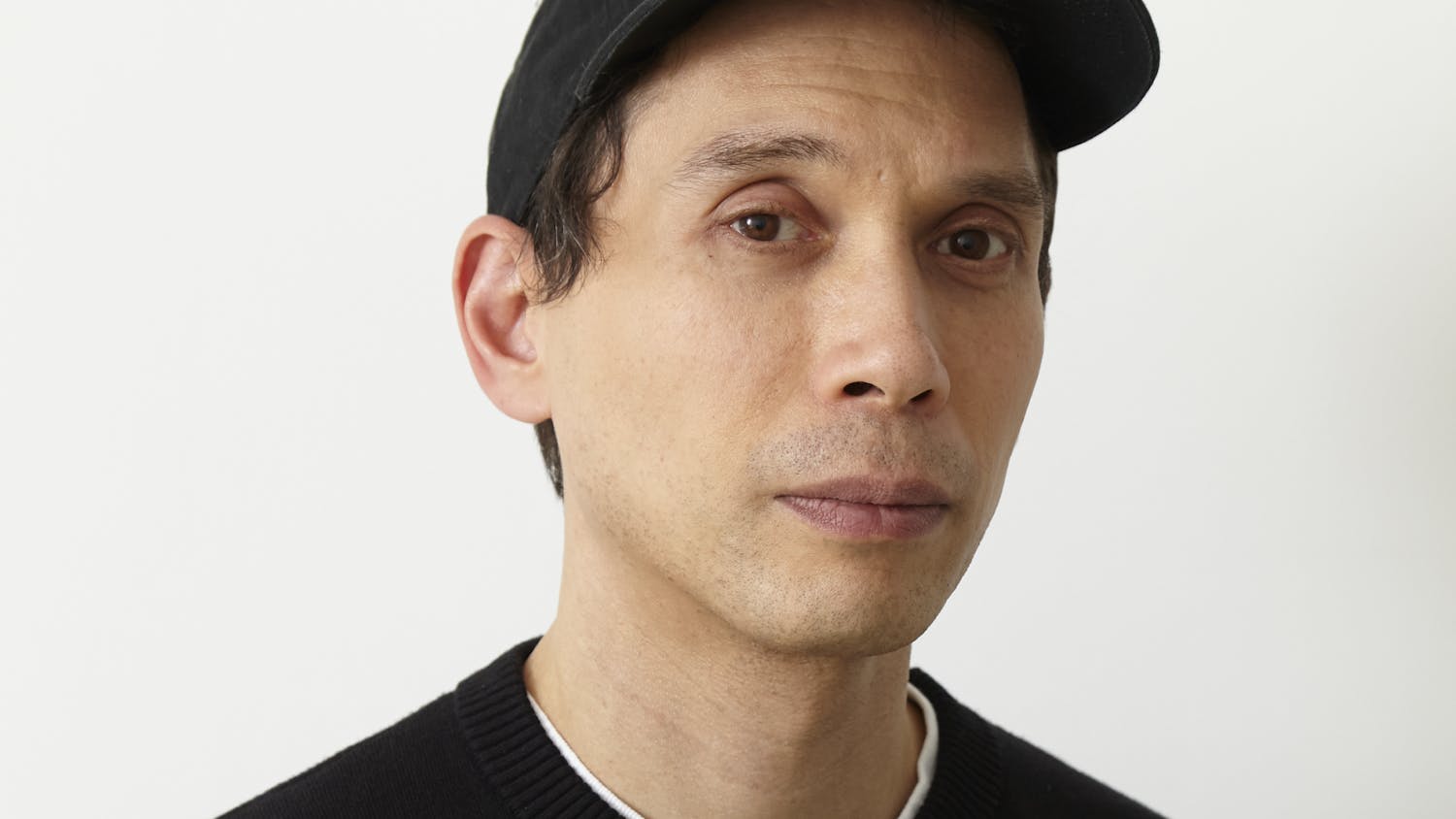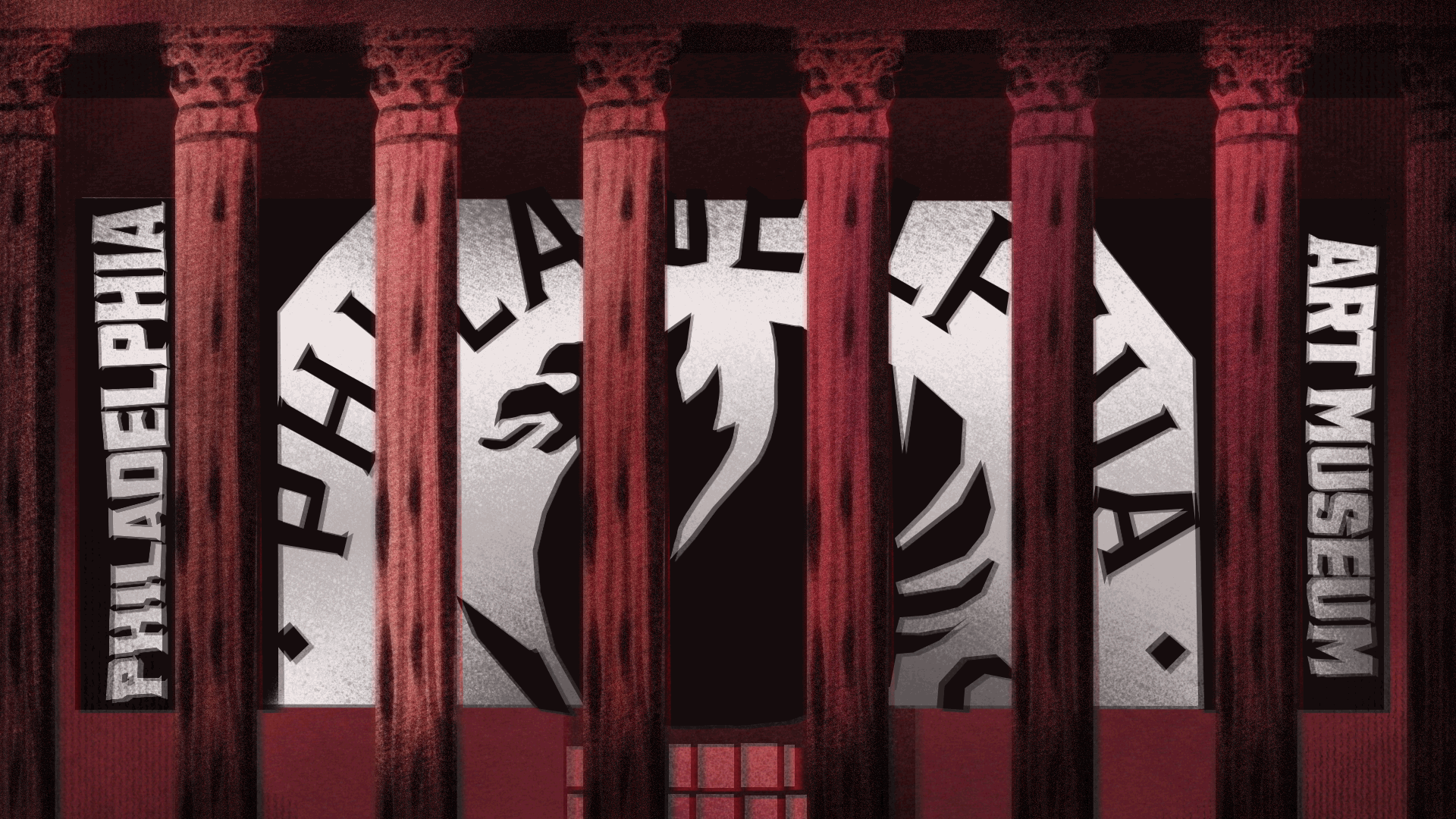Nothing is strange about Mark Cohen’s Strange Evidence at the PMA. Rather, Cohen presents the ordinary and often mundane to the fraction of the PMA crowd that visits the Perelman Building: a lone newspaper, kids playing, old women bundled in scarves in both black and white and color photographs. Wilkes, a small city in northeast Pennsylvania, is the subject of the exhibit, which features images spanning four decades from the ‘70s to the present. Cohen’s work is astounding for its innovative and often haphazard photographic style. His admittedly “compositional mishaps” are results of his voyeuristic style of street photography. Armed with a small film camera with attached flash, Cohen sees compositions and attacks them, snapping photographs without using his viewfinder and instead, simply pointing and shooting his subjects. It’s surprising that strangers are accepting of his unusual professional methods. However, it is these methods which make Cohen, in our generation’s terms, the first Facebook photographer and a trailblazer for legions of proponents of the amateur, yet artistic point and shoot.
Strange Evidence is a collection of photographs which individually are often out of focus, off center or over-flashed, yet together reflect clearly on 40 years of life in a small city. Cohen captures both community scenes and home scenes, bus rides, bingo, backyard play and bubblegum. It is crucial to understand that Cohen honed his style long before cameras lacking viewfinders were produced and pointing and shooting became the mainstream. This style of photography is what is so extraordinary about the exhibit, which reveals itself as a well–rounded reflection of life balancing photographs of action, moments of play and walks in town with reflection, the silences sitting on porches and benches in the main city center.
The exhibit is governed by the ‘70s imagery. Highlighting the decade, “Girl and Man at Road” (1975) focuses on the flared plaid pants of a man and short skirt of a girl with mid–calf length socks fit into black chunky sandals. In the background you can catch the out–of–focus back bumper of a white vintage car. Astoundingly, the silence of this photo exposes the age through its aesthetic. Another highlight of this ‘70s extravaganza was “Radio Strapped On” (1974–5) which featured the only African American subject in the exhibit with an old–school radio dangling around the his neck. Behind the radio one notices the clear tears in a boy’s jacket and can follow the folds in the fabric to his hand to see his glistening nails.
Hands emerge as a dominant motif throughought the exhibit. In “Hand/Pomeroys” (1973) a crisp curled white hand with creased skin starkly contrasts the black of a coat and a blurred store in the background. Other hands smoke cigarettes or hold jump ropes. As many of the subjects are cropped and missing heads, these expressive hands are especially telling. Simultaneously, the hands suggest the power of inference — how one can stare at the silky hands of a child and unconsciously understand that the subject is not only a kid, but has been playing. Cohen explores other textures too: glistening nails, soft chiffon scarves, goose bumps and follicles on calves, the fur of dogs and chest hair, the raised freckles of a summer beach bum, the bumpy surface of a brick wall, the illuminating gleam of sidewalks at night wet from large snowflakes that fill the foreground of photos.
While the exhibit is dominated by the ‘70s, photographs from other decades seem to echo the styles and feel of the disco decade rather than convey the senisibilities of their own age. Perhaps this is a reflection of the lack of change in Wilkes–Barre, Pennsylvania as photographs from the new millennium appear in sync with early works rather than highlight the passage of time. Thus, rather than emphasizing a change, the exhibit is fluid in aesthetic and proves that stolen moments and small town simplicities — the "strange evidence" in Cohen's work — transcend temporal classification to appeal to viewers of all ages.






